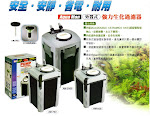The most advance aquarium product
Zeolites are minerals, and consist mostly of silica and aluminium, plus other elements like Sodium, Potassium, Iron, and Manganese. The most interesting feature of Zeolites is their crystal structure. You can think of Zeolites as a sponge with holes of different sizes. The small holes are the size of single molecules, about one billionth of a meter. The size of these holes depends on the chemical composition of the mineral. There are hundreds of different Zeolites known in nature, and also many different synthetic Zeolites. What makes these minerals so special is their ability to absorb specific compounds. Depending on their composition, they preferentially absorb different compounds. This means that they are more likely to absorb one compound more than the other if both are available. The holes to which a compound binds are not empty, but rather filled with sodium or potassium. As soon as a preferred compound is available, another compound, usually--sodium or potassium, is given off, and the compound will be absorbed. This reaction, the replacement of one ion for another ion, is called ion-exchange.
The diagram on the left represents fresh Zeolite. Sodium (Na) and Potassium (K) ions are ready to be exchanged with other positively charged ions. The diagram on the right represents the release of Sodium and Potassium in exchange for Ammonium ions.
As already mentioned, Zeolites have a very porous structure. Under the microscope, they look almost like a sponge. This porous structure creates a large surface area for bacteria to settle. As the ammonium is adsorbed by the crystal structure, the bacteria living on the Zeolite get their food delivered to their doorstep. To enhance the filtration capacity, a carbon source is added, in most cases not directly into the filter, but into the aquarium.
Therefore, by adding a carbon source, all bacteria in the tank receive some additional food. But as those bacteria that sit on the Zeolite get the ammonia much easier and in much greater quantity than others in the tank, they can make much better "profit" from the carbon addition. To speed up the starting of these filters, some companies offer bacterial starter cultures, although their usefulness is debatable.
All these reactions can only take place when a carbon source is added. Without a carbon source, the filter would first only absorb ammonium and nothing else. It would be a simple ion-exchanger. After a few days to weeks, chemoautotrophic bacteria would settle on the ammonium-loaded Zeolite and oxidize it to nitrate, as indicated in the following reaction:
NH4+ + O2 + 3OH-= NO32- + 2 H2O
Therefore, such a filter would actually produce nitrate, and its use for aquaria would be rather limited! When I said previously that the ion-exchange process itself is not of much importance in the marine aquarium I may have been a bit too simplistic. Over the last year or so, many people actually have used this effect in a very elegant way. In new tanks, a little powerhead with a cartridge full of Zeolite can have a very positive effect on the stability of the tank. As ammonium is oxidized to nitrite, a reduction of ammonium levels reduces the nitrite peak in the start-up phase considerably. As the excess ammonium is taken out of the system before it is oxidized and starts causing problems, the Zeolite filter acts as a buffer which stabilizes the nitrogen cycle in the tank. In such a case, the Zeolites have to be changed every few days and no carbon source is added.
In the “normal” Zeolite filters with the addition of a carbon source, these filters can run for extended periods of time because ammonium is constantly removed from the minerals by the combined efforts of autotrophic and heterotrophic bacteria. After a while, the Zeolite is exhausted and needs to be replaced. If the bacteria remove the ammonium from the minerals why doesn't the filter run forever? First of all, the bacterial films will slowly clog up the pores, thereby reducing the adsorbing capacity, secondly other ions will also be adsorbed onto the Zeolite. As the bacteria do not remove these ions (at least not preferentially), they will slowly become enriched and therefore reduce the number of places available for adsorbing ammonium. In industrial applications Zeolites are often recycled. This is definitely not an option for the home aquarist, as it involves the use of highly aggressive liquids. If you try to do this in your kitchen you endanger your family's health and that of other people! Saving money this way is just downright foolish. If you decide to set up a marine tank, make sure you can afford to maintain in properly.
The diagram on the top represents bacteria taking advantage of the locally high concentration of Ammonium trapped in the Zeolite and breaking it down to Nitrogen gas. The diagram on the bottom represents well fed, nutrient rich bacteria that have reached the end of their lives drifting from the Zeolites, destined to be skimmed out of the tank.
Mr. Aqua Super Zeolite
The most comprehensive filter media series
Exclusively Distributed by:
Mr. Aqua Aquarium System Philippines
Email: boniface_lan@yahoo.com
Email: boniface_lan@yahoo.com










